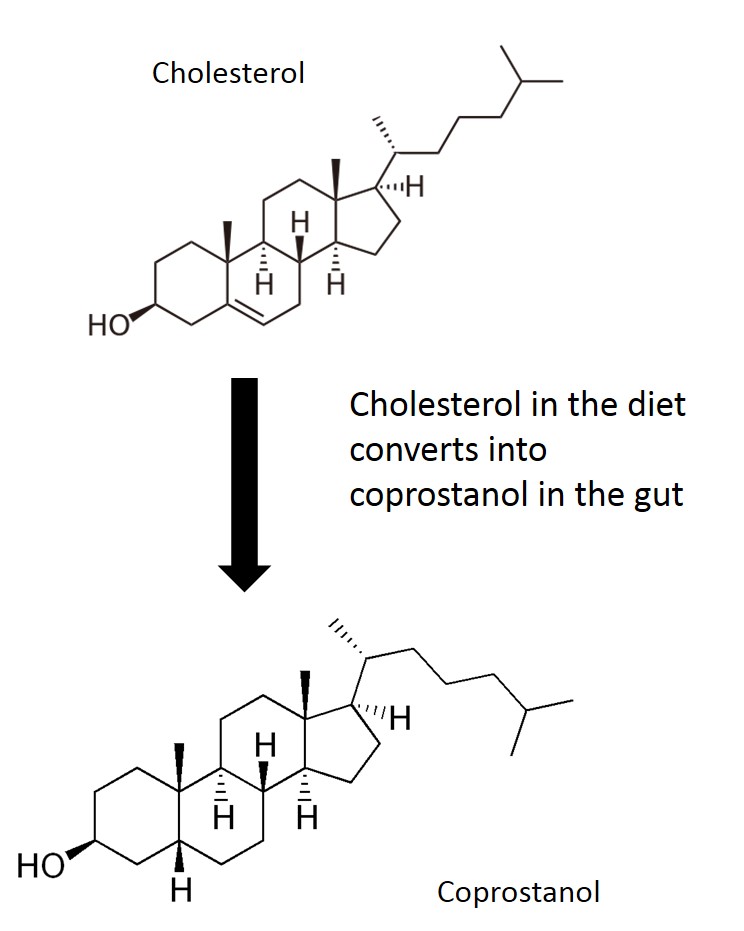Biomolecular analysis
The lipid biomarker approach – the research will address the problem of coprolite species identification on the basis of aDNA, by applying a lipid biomarker approach. Generally, lipids are structurally more robust and exhibit a resistance to degradation far superior to that of aDNA. Archaeological applications have been developed extensively over the past two decades for investigating diet through the analysis of lipids absorbed in ancient pottery (Evershed, 1993; Dudd et al., 1999; Evershed et al., 1999; Evershed, 2008). Less common is the characterisation of lipid biomarkers (specifically, sterols and bile acids) for the investigation of ancient faecal material. These biomarkers, originally discovered in the biomedical field, have latterly been used to identify sources of faecal pollution in water from modern-day sewage pollution and agricultural runoff (Bull et al., 2002 and references therein). Subsequently, there has been an increasing use of faecal biomarkers in archaeological investigations whereby a combined characterisation and quantification of both sterols and bile acids has, amongst other applications, provided insights in the agricultural practises of the Minoans (Bull et al., 1999; Bull et al., 2002), identifying use of space in early settlement sites (Baeten et al., 2012, Shillito et al., 2011a), and early animal penning and management prior to domestication (Shillito et al., 2013).
This research will assess the potential for faecal biomarker movement in archaeological cave deposits by examining the concentration of biomarkers throughout the stratigraphic sequence. If movement is found to be restricted, the biomarkers could be used in the absence of discrete coprolites to give a more precise date for the human presence in the cave. This would be achieved through the application of compound specific 14C dating capabilities currently being developed at Bristol, with researcher Co-I Stafford. The results will be highly applicable to other early habitation sites, many of which are located in caves. There is also wider applicability of these results in providing support (or otherwise) for the identification of ancient human DNA in these samples. Whether or not our hypothesis that these are human coprolites is correct, the presence of human DNA is not disputed. However the sterol analysis will provide a crucial insight into how the human DNA entered the cave, perhaps through the ingestion of hair or other human tissues by animals. This depositional pathway has been observed in Pleistocene hyena coprolites in South Africa which contained probable human hairs (Backwell et al., 2009).





